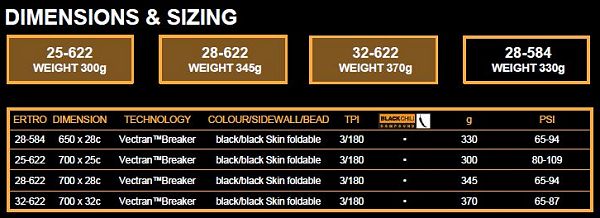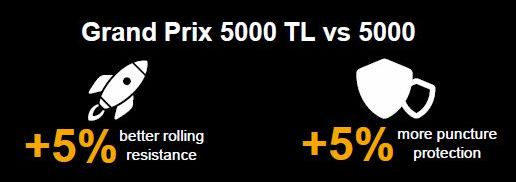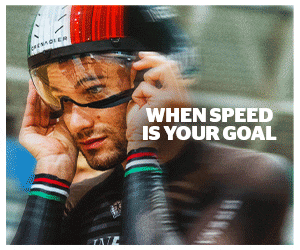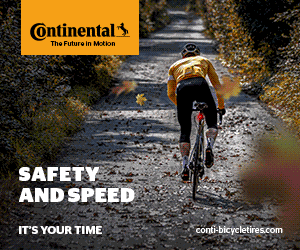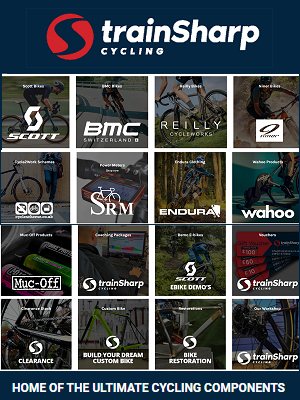For over a decade (14 years), the Grand Prix 4000 has been, say Continental, a market leader and their goal was to make it better with the GP 5000
The Continental Grand Prix 5000
Looking through the blurb from Continental, the goals were simple enough when developing the GP 5000 and GP 5000 TL – The goal was to improve and upgrade the 4000’s rolling resistance, mileage, speed, as well puncture protection. And, importantly, the new tyre also had to embrace new technologies that themselves were being embraced by the market place, like tubeless tyres.
The end result is two tyres, the GP5000 and the GP5000 TL (tubeless).
The GP 5000 has new technologies such as:
— Laser grip: The lazered micro profile structure expands over the tyres should and provides outstanding cornering.
— Active Comfort Technology – a compound material that enables vibration damping while it is not having influence on the rolling resistance. It balances stiffness for steering and comfort for directional stability.
— BlackChili: Improved compound to give you excellent grip, higher mileage and more efficient rolling (less resistance)
— Vectran Breaker: A synthetically produced high tech fibre that is extremely tear resistant for minimal weight helping the GP 5000 give stronger and be more protective than ever.
— TL (Tubeless): The TL technology is designed for them to be easier to install, simply with a standard track pump.
Like the GP4000 before it, the GP 5000 and 5000 TL are all-round tyres (racing and training) that are designed to be used all year round as well. The GP 5000 not only feels like a quality tyre but this racing tyre also rides with a level of ‘comfort’ and stability on the rim helping riders be faster. As such, it’s ideal for beginners as well as seasoned pros.
Lets face it, puncture resistance is generally down to ‘the luck of the draw’ as there will always be something on the road that will tear through anything but the general consensus of reviews is that the GP 5000 and more so the GP5000 TL are both very good in the puncture resistance department with many a reviewer saying that during the review period, they hadn’t punctured the new tyre.
And lets not forget Continental’s Get the Grip promotional phrase (Get the Grip) and so it’s no surprise that the GP 5000 provides even more grip than before with that grip evenly distributed over the tread of the tyre, providing sufficient grip even when banked over into a corner, grip that is very important especially these days with the braking power of discs on bikes.
And while the grip has improved, the new GP 5000 is said to roll 12% faster than the GP 4000S II, and important to keep riding time at its maximum, the GP5000 is said to be 20% more puncture-resistant.
When it comes to the rolling and aero qualities of the tyre, they were tested by Image: Aero-coach – https://www.aero-coach.co.uk/gp-5000-tubeless-data – in their tests they summarised the results with “In this test we found that the wider versions of the GP 5000 were faster, but that the clincher GP 5000 25mm was marginally faster than the tubeless GP 5000 TL 25mm.
This small penalty in rolling resistance may well be outweighed on the road by improved puncture resistance, as tubeless tyres will seal themselves against small punctures automatically. The GP 5000 TL in 25mm is a very good performer for rolling resistance overall, and would make an excellent training and/or race tyre.”
So, in summary, the GP5000 is certainly an improvement over the GP4000, not just aerodynamically and with less rolling resistance but better puncture protection too. Which just leaves the question of which one do you go for, the traditional tyre and tube combo or the tubeless… What’s your preference – tell us on twitter at @velouk
Cycle Division’s Shop
Send your results as well as club, team & event news here
Other Results on VeloUK (including reports containing results)
- Features, Reports, Results
- Result: Beverley Town Centre Races
- Hill Climb Championships: Change of Course
- Crit Result: Portsmouth Evening Circuits 11
- Crit Result: RCR FatCreations Goodwood Summer Special
- UK Armed Forces Inter-services Road Race
- Report: TLI Cycling ‘Belgium Training Series
- BMCR RESULT: The Ron Day MK Bowl Circuit races (July 23rd)
- RR Result: Bath RC Junior National Series Road Race
- Crit Result: West Thames League 15
- Crit Result: SACA Salt Ayre Tuesday Series 15
- Crit Result: Bath CC Mid Summer Series 2
- Crit Result: Full Gas Summer Circuit Series #17
- TT Result: Ross-On-Wye & Dist CC 25m TT
- TT Result: Ross-On-Wye & Dist CC 10m TT
- TT Result: Kernow Racing Team 10m TT
- News: Men’s Tour of Britain Route (Stage 1 & 2)
- Youth Result: RL360 Isle of Man Youth League 14
- TT Result: Verulam Cycling Club 25m TT
- TT Result: Manchester & District Ladies CA 25m TT
- TT Result: Ferryhill Wheelers CC 25m TT
- Crit Result: Banbury Star Crit Series #2
- RR Result: Lakes Road Club Summer Road Race
- National Circuit Series: Colne
- TT Result: Kings Lynn CC 15m TT
- TT Result: ECCA 10 mile Time Trial
- TT Result: Chorley Cycling Club 10m TT
- TT Result: Houghton CC 25m TT
- TT Result: Bournemouth Jubilee Wheelers 10m TT
- TT Result: Farnham RC 10m TT
- Crit Result: King&Queen of the Bowl Series #13
- TT Result: Kernow Racing Team 10m TT
- Crit Result: Lichfield/Velospeed No Frills at Curborough #7
- TT Result: Swindon RC & Swindon Wh 50m TT
- Crit News: Spatzwear Friday Night Crit Series #6 | YBC
- GB News: Paracycling Squad for Paris 2024
- Crit Result: Thanks Crit it’s Friday 7
- Crit Result: Omega Portsmouth Circuits 6
- Result: BMCR National Road Bike TT Championship
- Crit Result: Ride Revolution Coaching Summer Crits #2
- Crit Result: Shutt Velo Rapide Hitters Crits Rd2
Other News on VeloUK
- Hill Climb Championships: Change of Course
- TT Result: Ross-On-Wye & Dist CC 25m TT
- News: Men’s Tour of Britain Route (Stage 1 & 2)
- GB News: Paracycling Squad for Paris 2024
- Ribble Redefines Road with launch of Allroad
- BMCR: National Road Bike Time Trial Championship
- SUNDAY: Bath Road Club Junior National Series Road Race
- TLI CYCLING FEATURE: SUPER4SERIES
- NATIONAL CIRCUIT SERIES UPDATE 2024
- News: Josh Tarling Extends Contract at Ineos
- Tour of Britain for Men 2024
- News: Connor Swift Extends Contract with Ineos
- Updated GB Olympic Team News
- Sunday: 2024 Youth Circuit Race Championships (Cyclopark)
- ROBBED BY THE HIGHWAYS AGENCY – National Highways
- Startlist: BMCR National Road Championships E/F/G/H
- OLYMPIC NEWS – Team GB Announces First Riders for Olympics
- News: Alex Richardson Retires
- New Releases from Shutt Velo Rapide
- STARTLIST: Men’s British Road Race Championships
- STARTLIST: 2024 Women’s British Road Race Championships
- Startlist: 2024 CAMS Yorkshire Classic Road Races
- Startlists: 2024 Circuit Race Championships
- Startlist: CAMS Ronde van Wymeswold
- Startlists & 2023 Results: National Time Trial Championships
- NEWS: Star Studded Line Up for National Road Champs
- Riders so far: London Dynamo Summer Road Races
- Women’s Tour of Britain Startlist (provisional)
- News: Lincoln winner hit by car
- Entries Wanted: Ilkley Cycles Races
- GB Team Named for Women’s Tour of Britain
- STARTLISTS: NW, Yorkshire & NE Regional RR Championships
- Startlists: East Midlands Road Race Championships
- News: Ribble Rebellion Race USA’s Armed Forces Cycling Classic
- TT Result: Legato Racing Team 10m TT
- Pre-Race Rider Quotes: Ford RideLondon Classique
- STARTLIST: Witham Wheelers Road Races
- Team News: Tour of Britain for Alba Development RT
- Startlist: Totnes Vire 2024
- Starters: NW Junior/U23 360cycling Two Day







